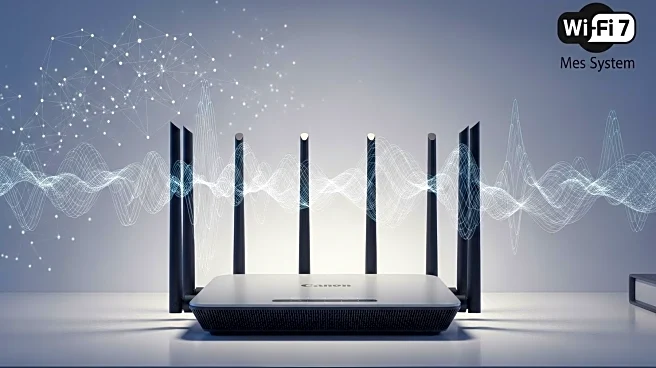What's Happening?
Netgear has launched the Orbi 370, an affordable Wi-Fi 7 mesh router system designed for everyday households. The system offers stable and responsive Wi-Fi coverage with a simple interface, making it suitable for users who prefer ease of use over extensive configuration options. The Orbi 370 supports dual-band Wi-Fi 7, but lacks a 6GHz band, limiting its maximum channel bandwidth. It is competitively priced compared to similar systems, such as the Eero 7 and TP-Link Deco BE25. The system is aimed at users who do not require deep customization or enterprise-level features, focusing instead on providing reliable internet coverage for typical home use.
Why It's Important?
The introduction of the Orbi 370 reflects a trend towards more affordable Wi-Fi 7 routers, making advanced internet technology accessible to a broader audience. This development is significant for consumers who seek reliable internet coverage without the need for complex configurations. The system's competitive pricing and ease of use may appeal to households looking to upgrade their internet setup without incurring high costs. However, the lack of advanced features may deter users who require more control over their network settings, potentially impacting those with high-speed fiber internet connections.
What's Next?
As Wi-Fi 7 technology becomes more prevalent, consumers can expect further advancements in router capabilities and pricing. Netgear's focus on simplicity and affordability may drive other manufacturers to offer similar products, potentially increasing competition in the market. Users interested in more advanced features may need to explore alternative options from companies like Ubiquiti and Asus, which offer greater customization. The ongoing evolution of Wi-Fi technology will likely continue to shape consumer expectations and influence purchasing decisions.
Beyond the Headlines
The Orbi 370's emphasis on ease of use over customization highlights a shift in consumer preferences towards convenience and simplicity in technology products. This trend may influence future product designs, encouraging manufacturers to prioritize user-friendly interfaces and streamlined features. Additionally, the system's limited configuration options raise questions about the balance between accessibility and functionality in tech products, potentially sparking discussions on the trade-offs involved in making technology more accessible.














